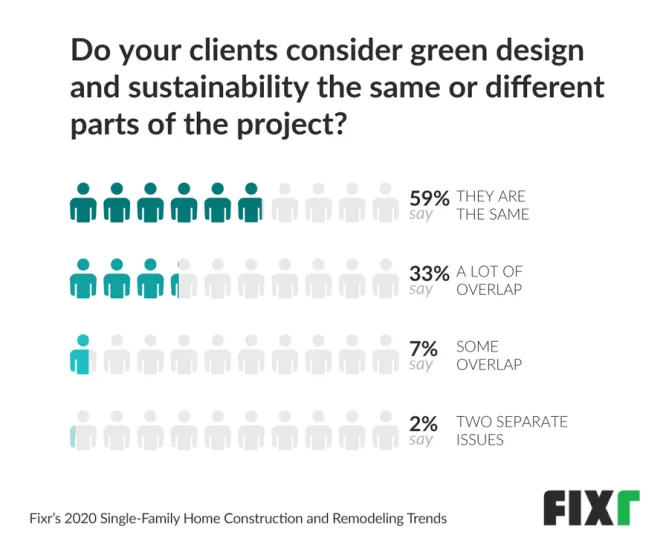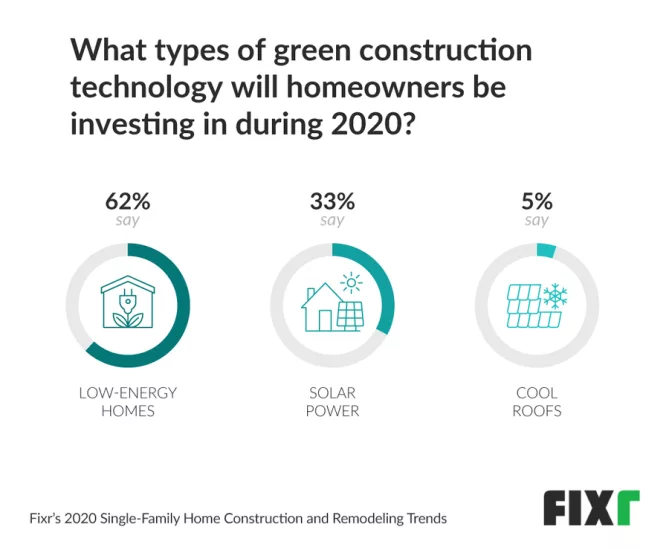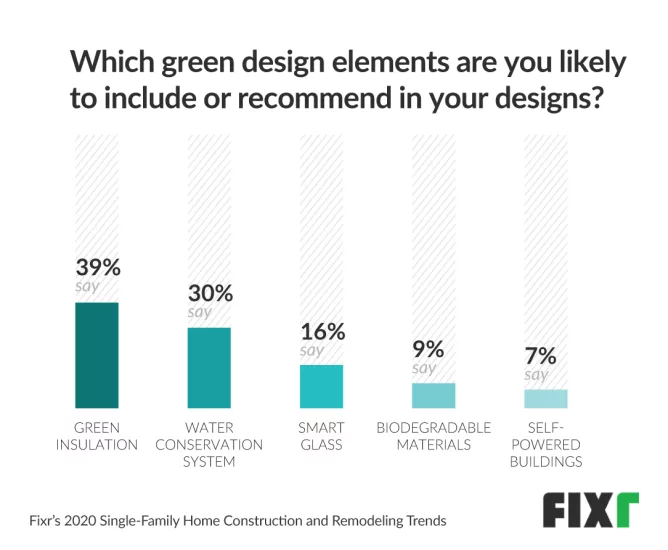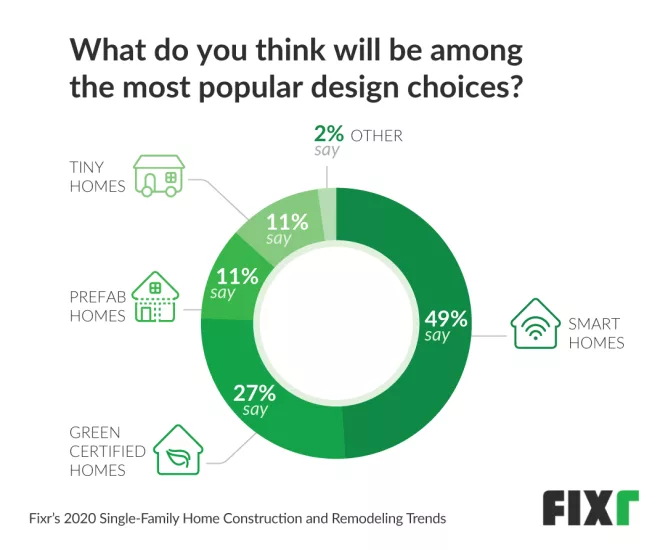Sustainable and Green Home Design Trends to Watch in 2020 and Beyond






If you spend any time researching what the latest trends are in home design, you’re likely to come across terms such as sustainable and green design. Sustainable and green homes are more likely to use less energy, be healthier, and have better air quality than traditional homes. They’re also likely to be better for the environment, using materials and techniques that can result in long-term reduction in energy use, which translates into a home that can sustain itself on less.
If your customers are seeking sustainable home designs, you may want to take a look at the latest trends. There is a lot of variation in what sustainable and green design can mean, so by following the trends, you can help them make better, more informed choices for their home.
In their Single-Family Home Construction Trends Report of 2020, Fixr reached out to industry experts to get their feedback on several topics, including sustainable and green design. Their answers can help provide clues into where the trends are leading for these important industries.
What Are Sustainable and Green Designs?
Sustainable design refers to methods that help a home reduce its consumption of non-renewable energies. It can also refer to designs and methods that allow the home to sustain itself without outside energy sources, including things like solar panels and rainwater collection.
Green design means focusing on materials and designs that have a lesser impact on the environment. This includes choosing materials that are renewable, recyclable, and that don’t give off toxic chemicals including high levels of VOCs.
Who’s Investing In These Designs?
According to the experts, it’s middle aged homeowners who are most likely to be investing in sustainable and green designs. When polled, 44% felt that older millennials were the most likely to invest with another 37% saying that it would be Gen-X, and a further 15% say younger millennials. Since younger millennials are still in their late 20s, they may be less likely to both own homes and be in a position to make upgrades the way that older millennials and Gen-Xers may be, which can explain the percentages.
Homeowners Believe Sustainability and Green Design to Be the Same
When asked, 59% of respondents said that they felt that homeowners believed sustainable design and green design to be the same thing. Another 33% responded that there was a lot of overlap between the two.
While the two do overlap, there are some distinct differences between them. It is true, however, that when you begin working in one area, you increase the likelihood of the other area to follow suit. However, that being said, anyone working to lower their energy usage is likely to make their home greener while improving its sustainability. Those working solely to make their homes healthier through the use of green materials may have less of an impact on their home’s sustainability.
Sustainable Trends
When it comes to which sustainable trends homeowners will want to focus on most in the coming year, 58% of respondents answered that minimizing energy consumption was the most important feature. This is one of the best ways for a home to become more sustainable, rather than strictly green, so it makes sense that this tops the list.
Tied in second place, respondents also answered that a tight building envelope and better air quality were also important. A tight building envelope can help to reduce energy consumption, but it also helps to improve air quality at the same time, which can mean a positive impact in both areas.
Low Energy Homes
When asked what types of green construction technology homeowners were likely to invest in, most responded that low energy homes were at the top of the list. Low energy homes are very sustainable, using low to no outside energy for day to day Inliving. This can save homeowners a lot of money over the lifetime of the home, while making it greener at the same time.
Tight Building Envelope to Prevent Energy Transfer
Part of sustainability means stopping energy from leaving your home, so you need less of it to heat and cool. A tight building envelope is the most popular method for doing this. Tight building envelopes seal up the exterior of the home, preventing air gaps and adding insulation over the entire facade, including the studs, so that there is less chance for energy transfer to occur.
Green Insulation Most Recommended
Most homes today are under-insulated, which means that they often need to spend more money to heat, cool, and stay comfortable than fully insulated homes do. This may be why respondents answered that green insulation is the thing they would recommend the most to homeowners looking for ways to invest in green design elements for their home.
Smart Homes Top Lists
When experts were asked what design choices would become the most popular in the coming year, most answered that they felt the smart home was going to gain the most traction. Smart homes can help people reduce their energy usage by helping them pay more attention to how they use energy, while lowering energy usage automatically when people are away. This savings could explain the rise in smart home technology that is predicted to continue over the next year.
Invest in a Greener, More Sustainable Home
If your customers are considering upgrading their homes to be greener or more sustainable, paying attention to where the trends are can help you determine the best places to invest. Whether they want to make their home healthier or lower energy usage, paying attention to these and other trends can help you and your customers better achieve these goals.